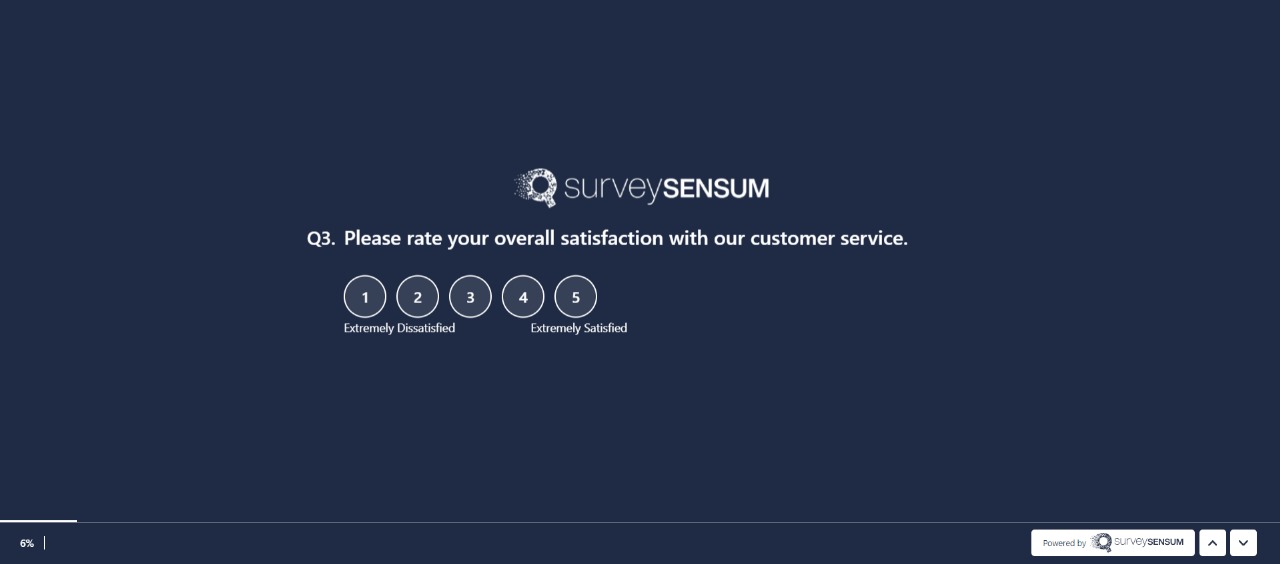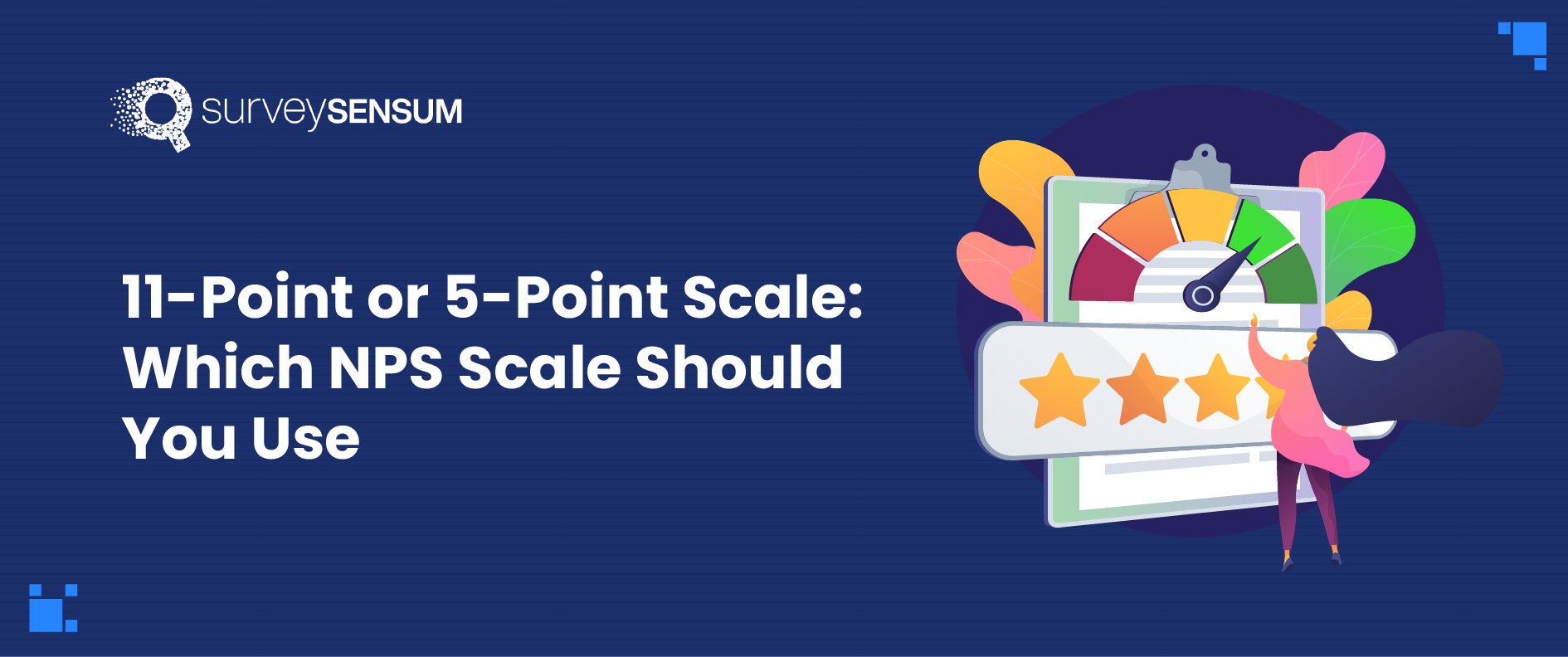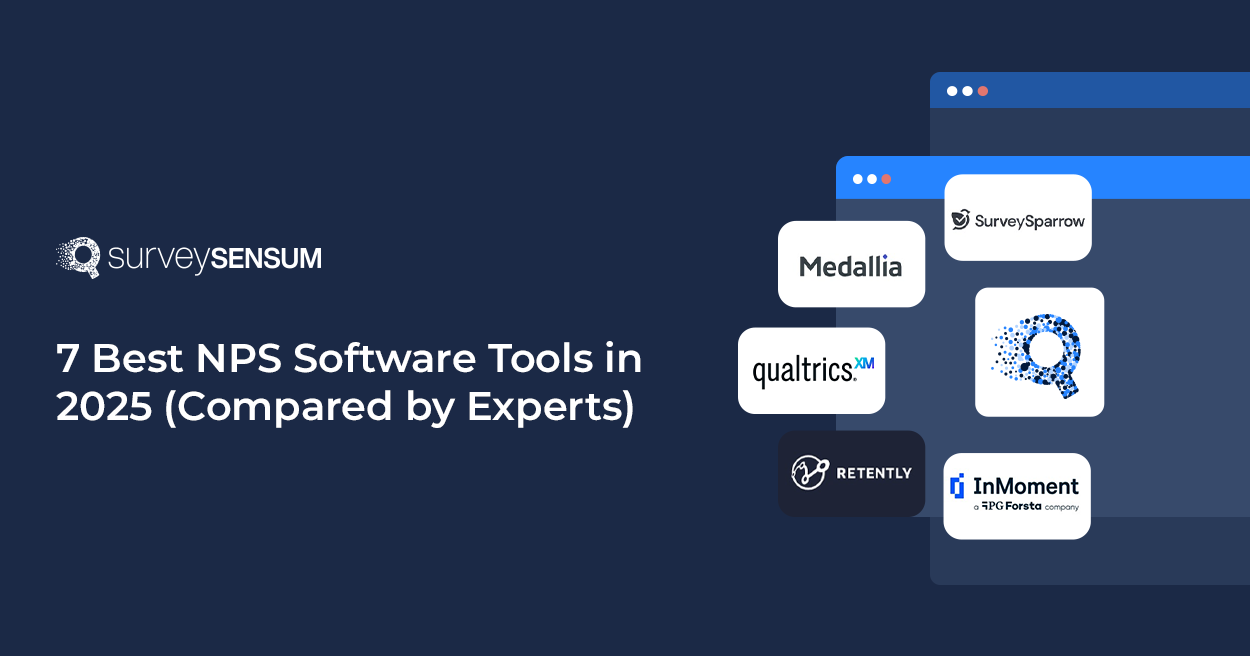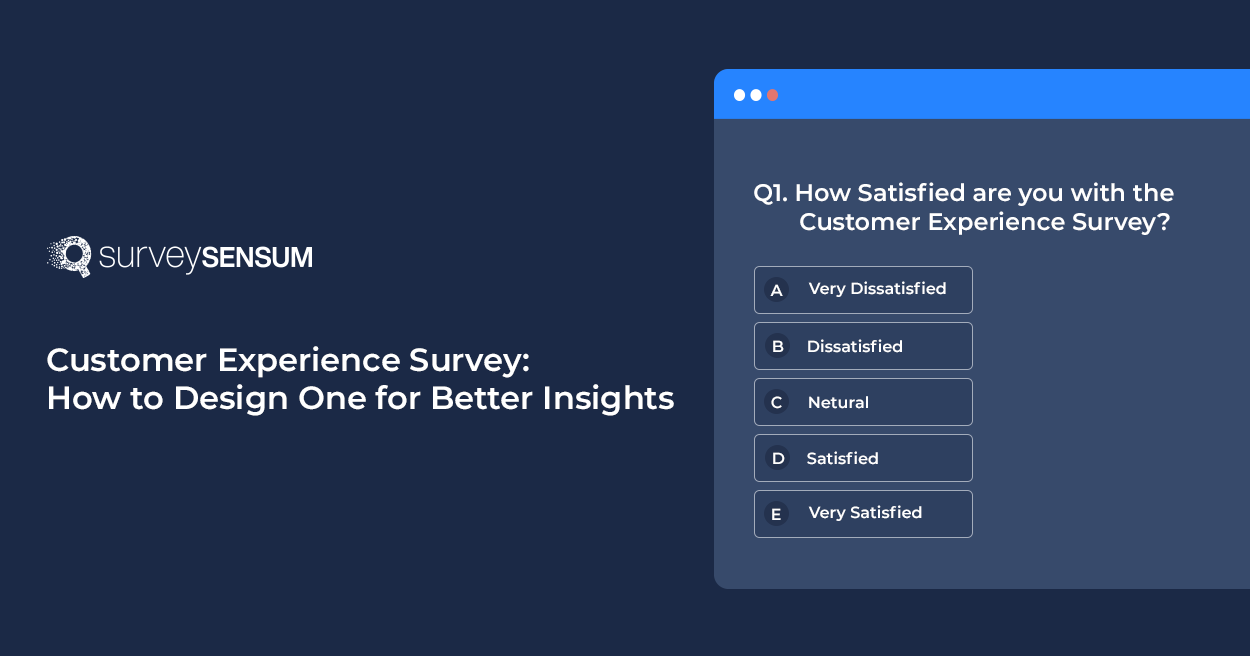

The 5-point NPS scale is navigating through the metric system nowadays, with the NPS platform providing an efficient way for organizations to collect and analyze customer feedback.
Many organizations have started using it on their mobile surveys and many are in the process of adapting it.
But is this the right scale to measure your customer loyalty?
If yes, then what are its applications? Where to use it? And, how to calculate its NPS score?
Before indulging in the NPS 5 point scale, let’s talk about NPS score calculation.
What is NPS?
Net Promoter Score is a simple and straightforward CX metric used by organizations to gauge their customer loyalty by asking one simple question.
→ How likely are you to recommend us to your friends or colleagues?
This loyalty question is asked on an 11-point scale where the responses 0-6 denote detractors (unhappy customers), 7-8 denote passives (neutral customers), and 9-10 denote promoters (happy customers) who can also be converted into brand advocates.
The NPS question is followed up by an open-ended question asking the reasons behind the score shared.
→ Could you please share the reason behind your score?
The NPS score not only helps you measure customer loyalty but also informs you of the retention rate. It tells you what your customers are most unhappy about and if they are about to leave you. And not just that, but it enables you to build a healthy relationship with your customers.
Now you must be wondering about how to calculate it, right? Let’s see.
How to Calculate NPS?
NPS is simple to calculate as it is only the difference between the promoters’ % and the detractors’ %.
For example, if promoters are 75% and detractors are 10%, then your NPS will be:
75%-10%= +65%
Now, how to calculate NPS on 5 point scale? Well, to calculate NPS on 5 point scale, the formula remains the same.
No need to calculate NPS manually, calculate your NPS here!
After knowing about NPS in detail. Let’s have a glance at the types of NPS Scales.
Types of NPS Scale
There are two types of NPS scales used to measure customer loyalty.
- 11-point NPS scale
- 5-point NPS scale
11-point NPS Scale
The 11-point scale is a commonly used scale while measuring NPS. Based on the score, the respondents are categorized into detractors, passives, and promoters.
→ Learn about color coding your NPS Scale.

Receiving a “0” or a “1” on the NPS scale can be disheartening, especially when it comes from a seemingly satisfied customer. However, it’s crucial to understand that not all customers giving low scores are necessarily unhappy with what you provide.
Detractors sometimes have underlying issues that don’t directly relate to your business. Engaging with them and addressing their concerns offers an opportunity to uncover the actual source of their dissatisfaction. These underlying causes could stem from external factors like financial challenges or personal situations, rather than any shortcomings in your product or service.
This underscores the importance of taking proactive steps to connect with dissatisfied customers and resolve their issues. Doing so not only helps in preserving customer relationships but can also potentially protect valuable revenue streams.
That’s all about the 11-point NPS scale. It’s time for the NPS 5 point scale.
5-point NPS Scale
Similar to the 11-point NPS scale, the 5-point NPS scale helps you to measure the immediate customer sentiment about their recent experience with the products and services. Also, as per some studies, it is easier to use and understand for the customer as there are not many options available to confuse them.
Here’s an example of a 5-point NPS scale.

The respondents on the 5-point scale are divided into three categories. Respondents who share 1-3 scores are detractors, 4 are passive, and 5 are promoters.
NPS Calculator – 5 point scale
NPS formula = % of Promoters – % of Detractors
Let’s understand this with an example,
Let’s say you surveyed 100 customers and received the following responses
Categorize Respondents:
- Promoters: 40 customers.
- Passives: 30 customers.
- Detractors: 30 customers.
Calculate Percentages:
Percentage of Promoters = 40/100 * 100% = 40%
Percentage of Detractors = 30/100 * 100% = 30%.
NPS = 40% – 30% = 10%.
Now that we know what a 5-point NPS scale is, let’s unravel the reason why it is not recommended.
So, launch your 5-point NPS scale with pre-designed survey templates in just 5 minutes!
Why is a 5-Point NPS Scale Not Recommended?
There are a few reasons why a 5-point NPS scale is not usually recommended.
1. Fluctuations in the result
A 5-point NPS scale, offering options like “Very Unlikely,” “Unlikely,” “Neutral,” “Likely,” and “Very Likely,” doesn’t give enough detail for people to express their feelings. It’s not sensitive enough to notice small differences in how customers think. Because of this, even small changes in how customers feel can make a big change in the NPS score.
MeasuringU did a UX Benchmark study on TV companies using both 5-point and 11-point scales. For Comcast, the score went from -63% on the 5-point scale to -55% on the 11-point scale. For DirecTV, it changed from -14% on the 11-point scale to -20% on the 5-point scale.
Even though the NPS questions were the same in some surveys, changing the scale made people give different answers. This matters a lot because it could make companies sell less, affect how well the NPS score works, change how people see the companies, and more.
2. Reduction in Promoters
On an 11-point NPS scale, two scores (9,10) denote promoters, giving them the option to choose from a great experience to the perfect one.
On the other hand, on a 5-point NPS scale, only one score (5) denotes promoter, which signifies perfect experience, something rarely happens. So the customer opts for a (4) score adding to the number of passives.
3. Affects external benchmark
If you use the 5-point NPS scale, your external benchmark will differ. Why?
Because organizations commonly use an 11-point NPS scale. Using 2 different NPS scales gives you a different benchmark as compared to using the same NPS scale. And the benchmark can vary by 4%.
→ Discover how to do NPS benchmarking and NPS benchmarks across different industries.
4. Loss of score zero (0)
The score zero (0) plays a crucial role on an 11-point scale as it describes the terrible experience of the customer. But, the 5-point scale begins with 1, not giving an option to the respondent to share that they had the worst experience.
As for the organizations, they won’t be able to identify these respondents and take immediate action.
These are the reasons why it is not usually recommended. But do you know the right time to use this scale? Let’s find it out here.
When to Use Which Scale?
Using the 5-point NPS scale or 11-point NPS scale depends on your specific needs.
5-point NPS scale:
- Commonly used by researchers and marketers
- Ideal for compact transactional and mobile surveys.
- Suitable if you’re new to NPS and don’t need benchmarking.
For instance, Microsoft Windows pops up its 5-point NPS scale survey questions on users’ desktops.
While most companies still prefer the 11-point NPS scale because
- It provides a more nuanced view of customer sentiment.
- Allows for finer distinctions in feedback.
- Enhances benchmarking capabilities.
- Supports deeper insights into customer satisfaction.
- Aligns with industry standards for NPS measurement.
But whichever scale you use, make sure to close the feedback loop.
To do that, you need someone to actively address the feedback you receive. It’s not about chasing a higher score, but about making your customers happier. We’ve been there ourselves – our score was once a mere 40, and now it’s 83.
So, what you have to do is – listen to your unsatisfied customers, aka detractors. Understand their concerns, and take action to fix the issues. And don’t forget to let them know you’ve heard them – it makes them feel valued. This directly improves your NPS Score.
Identifying where your customers are struggling and smoothing out those pain-point areas can help you to make lasting customer relationships and ensure their loyalty. Also, if they request new features, add them to your product roadmap and let them know. This way you’ll increase their satisfaction and retain them.
Now that you know everything about the types of NPS scales, let’s explore which scale is best.
5-Point NPS Scale vs 11-Point NPS Scale
| 5-Point NPS Scale | 11-Point NPS Scale |
| Best used on the mobile, tablet. | Users are not comfortable on mobile. That’s why they’re best used on the web. |
| Only one score (5) denotes promoter, which signifies perfect experience…something rarely happens. So the customer opts for a (4) score adding to the number of passives. | Two scores (9,10) denote promoters, giving them the option to choose from a great experience to the perfect one. |
| Easy to aggregate and analyze due to fewer NPS response options. | Requires more data points to draw statistically significant conclusions. |
| External benchmarking could be difficult due to the limited use of a 5-point NPS scale | Get real-time data and do not affect NPS benchmarking |
Here’s a quick video that can help you decide which NPS Scale you should use and why.
Now let’s have a glance at how to create NPS surveys.
Steps to Create a 5-Point NPS Scale Survey
Let’s create a 5 point NPS scale survey with SurveySensum.
STEP 1: Create a free account or log in to your existing account.

STEP 2: After signing up, you will log into the portal, then click on the top-right corner “Create Survey”. And choose “NPS” or “Start from scratch”.

STEP 3: Customize the survey as per your requirements to match your brand’s tone. And your 5-point scale NPS survey will be ready to share.

STEP 4: After making the survey, it’s time to execute it in the appropriate manner. So, share your survey on the most-used platform as per your customers’ usage. Here we are sharing the survey on WhatsApp.

The next step is to create a contact list including all your customers

After clicking on ‘save & exit’, choose the template and your survey is ready to ship on WhatsApp.

And here’s the message that customers will receive on their WhatsApp.

STEP 4: Now that you have launched your NPS survey and have gathered relevant data, head over to the “Report” tab and get the detailed and analytical NPS report of your survey. This report will help you in deriving actionable insights to improve your NPS.

Conclusion
To wrap up the whole discussion on a 5-point and 11-point NPS scale to gauge customer satisfaction and customer loyalty, you must bear one thing in mind for sure, and that is CONSISTENCY.
Both 11-point and 5-point scales have their merits and demerits. Remember the pointers we discussed in choosing the right NPS scale for your business, and keep to it. Follow only one scale that you prefer and stick to it. Don’t change the scale in between while sharing the survey because that will affect the whole result.
Consistency and continuous improvement are the keys to unlocking the full potential of NPS methodology. This was all from our side.
Frequently Asked Questions
The 5-point NPS scale is a variation of the traditional NPS question that uses a 5-point scale instead of the standard 11-point scale. Respondents are asked, “On a scale of 1 to 5, how likely are you to recommend [product/service/company] to a friend or colleague?” Responses are categorized as follows:
5: Very likely
4: Likely
3: Neutral
2: Unlikely
1: Very unlikely
2. Can the NPS scale be 1 to 5?
Yes, the NPS scale can be adapted to use a 1 to 5 scale instead of the traditional 0 to 10 scale. However, using a 1 to 5 scale may provide less granularity in responses compared to the standard 11-point scale.
3. What is a good NPS score out of 5?
Interpreting NPS scores on a 5-point scale can vary depending on the context and industry. Generally, a score of 4 or 5 would be considered positive, indicating that respondents are likely to recommend the product, customer service, or company. However, what constitutes a “good” score may differ between organizations and industries.
4. How do you calculate NPS from 5?
To calculate the NP) from responses on a 5-point scale, you typically categorize respondents into three groups:
- Promoters: Those who rate 4 or 5.
- Passives: Those who rate 3.
- Detractors: Those who rate 1 or 2.
Then, subtract the percentage of detractors from the percentage of promoters to obtain the NPS score. The formula remains the same as the traditional NPS calculation: NPS = % Promoters – % Detractors.

















